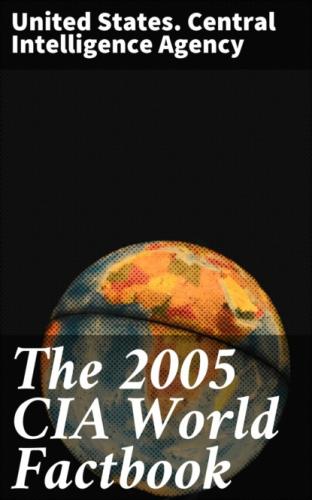Guyana Defense Force: Ground Forces, Coast Guard, Air Corps, Guyana
People's Militia
Manpower available for military service:
males age 18–49: 206,098 (2005 est.)
Manpower fit for military service:
males age 18–49: 137,964 (2005 est.)
Military expenditures - dollar figure:
$6.5 million (2003)
Military expenditures - percent of GDP:
0.9% (2004)
Transnational Issues Guyana
Disputes - international:
all of the area west of the Essequibo (river) is claimed by
Venezuela preventing any discussion of a maritime boundary; Guyana
has expressed its intention to join Barbados in asserting claims
before UNCLOS that Trinidad and Tobago's maritime boundary with
Venezuela extends into their waters; Suriname claims a triangle of
land between the New and Kutari/Koetari rivers in a historic dispute
over the headwaters of the Courantyne; Guyana seeks UNCLOS
arbitration to resolve the long-standing dispute with Suriname over
the axis of the territorial sea boundary in potentially oil-rich
waters
Illicit drugs:
transshipment point for narcotics from South America - primarily
Venezuela - to Europe and the US; producer of cannabis
This page was last updated on 20 October, 2005
======================================================================
@Haiti
Introduction Haiti
Background:
The native Arawak Amerindians - who inhabited the island of
Hispaniola when it was discovered by Columbus in 1492 - were
virtually annihilated by Spanish settlers within 25 years. In the
early 17th century, the French established a presence on Hispaniola,
and in 1697, Spain ceded to the French the western third of the
island - Haiti. The French colony, based on forestry and
sugar-related industries, became one of the wealthiest in the
Caribbean, but only through the heavy importation of African slaves
and considerable environmental degradation. In the late 18th
century, Haiti's nearly half million slaves revolted under Toussaint
L'OUVERTURE and after a prolonged struggle, became the first black
republic to declare its independence in 1804. Haiti has been plagued
by political violence for most of its history. It is the poorest
country in the Western Hemisphere.
Geography Haiti
Location:
Caribbean, western one-third of the island of Hispaniola, between
the Caribbean Sea and the North Atlantic Ocean, west of the
Dominican Republic
Geographic coordinates:
19 00 N, 72 25 W
Map references:
Central America and the Caribbean
Area:
total: 27,750 sq km
land: 27,560 sq km
water: 190 sq km
Area - comparative:
slightly smaller than Maryland
Land boundaries: total: 360 km border countries: Dominican Republic 360 km
Coastline: 1,771 km
Maritime claims: territorial sea: 12 nm contiguous zone: 24 nm exclusive economic zone: 200 nm continental shelf: to depth of exploitation
Climate:
tropical; semiarid where mountains in east cut off trade winds
Terrain:
mostly rough and mountainous
Elevation extremes:
lowest point: Caribbean Sea 0 m
highest point: Chaine de la Selle 2,680 m
Natural resources:
bauxite, copper, calcium carbonate, gold, marble, hydropower
Land use: arable land: 28.3% permanent crops: 11.61% other: 60.09% (2001)
Irrigated land:
750 sq km (1998 est.)
Natural hazards:
lies in the middle of the hurricane belt and subject to severe
storms from June to October; occasional flooding and earthquakes;
periodic droughts
Environment - current issues:
extensive deforestation (much of the remaining forested land is
being cleared for agriculture and used as fuel); soil erosion;
inadequate supplies of potable water
Environment - international agreements:
party to: Biodiversity, Climate Change, Desertification, Law of the
Sea, Marine Dumping, Marine Life Conservation, Ozone Layer Protection
signed, but not ratified: Hazardous Wastes
Geography - note:
shares island of Hispaniola with Dominican Republic (western
one-third is Haiti, eastern two-thirds is the Dominican Republic)
People Haiti
Population:
8,121,622
note: estimates for this country explicitly take into account the
effects of excess mortality due to AIDS; this can result in lower
life expectancy, higher infant mortality and death rates, lower
population and growth rates, and changes in the distribution of
population by age and sex than would otherwise be expected (July
2005 est.)
Age structure:
0–14 years: 42.6% (male 1,741,622/female 1,721,436)
15–64 years: 53.9% (male 2,137,225/female 2,242,639)
65 years and over: 3.4% (male 124,383/female 154,317) (2005 est.)
Median age:
total: 18.03 years
male: 17.63 years
female: 18.44 years (2005 est.)
Population growth rate:
2.26% (2005 est.)
Birth rate:
36.59 births/1,000 population (2005 est.)
Death rate:
12.34 deaths/1,000 population (2005 est.)
Net migration rate:
−1.68 migrant(s)/1,000 population (2005 est.)
Sex ratio:
at birth: 1.03 male(s)/female
